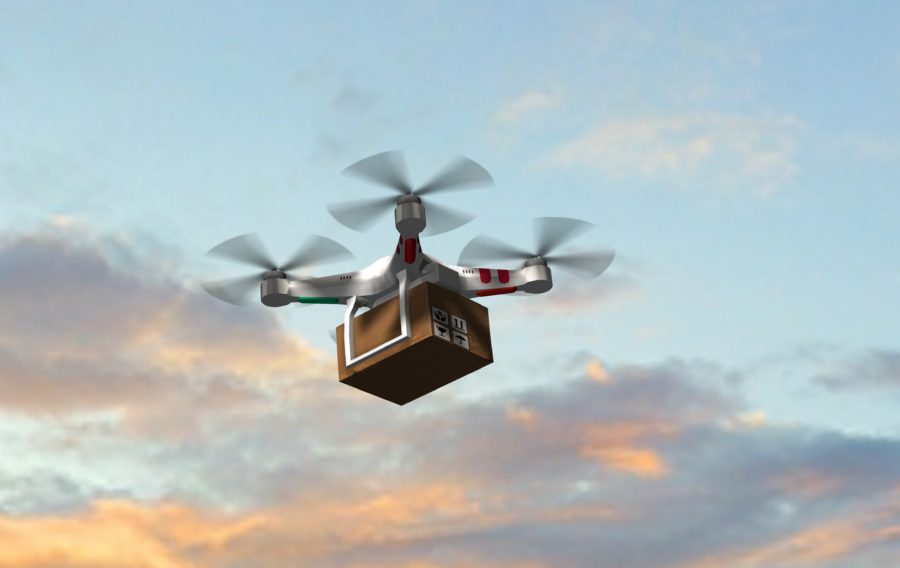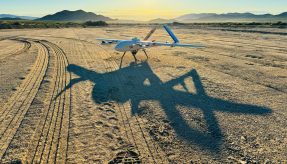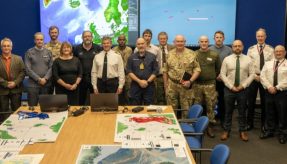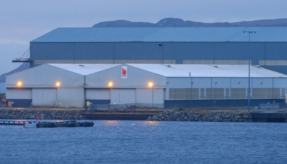
This Defence and Security Accelerator (Accelerator) competition seeks to develop and demonstrate the use of autonomous systems to deliver mission-critical supplies, focusing on the challenging ‘last mile’ resupply in the land environment.
The ‘last mile resupply’ involves the delivery of combat supplies from the forward-most location (such as a physical base or a logistics/infantry vehicle) to personnel engaged in combat operations. Although relatively small in distance, these resupply activities are challenging as they are in an environment that is typically hostile, complex and contested. These activities need to quickly and efficiently deliver vital supplies in order to maintain operational tempo and enable successful mission outcomes.
It’s important to note the last mile is a concept, not a fixed distance, and may be up to 30km in some scenarios.
The aim of a last mile resupply system is to:
- reduce the demand on existing platforms and infrastructure
- reduce the risk and burden on military personnel during last mile resupply
- increase the efficiency of the last mile logistic resupply operations with pace and accuracy
- provide an assured resupply capability for forward military users to enable more agile operations in complex environments
To achieve an autonomous last mile resupply system (ALMRS), we need to develop and demonstrate technologies in 3 key areas, which we have set as the 3 technical challenges for this Accelerator themed competition:
Challenge 1: unmanned air and ground load carrying platforms
Challenge 2: technologies and systems to allow load carrying platforms to operate autonomously
Challenge 3: technologies to autonomously predict, plan, track and optimise resupply demands from military users
We’ve provided additional information in Annex A. These are just 2 examples and should not limit your proposed capability. These are to provide you with representative user scenarios, help you understand the challenges faced in the last mile resupply and how your solution might be deployed.
Currently, the British Army resupplies the frontline using a variety of ground based and aerial delivery platforms depending on the circumstances and the nature of operation taking place. They can vary from transport aircraft and helicopters, large trucks to quad bikes with trailers or soldiers on foot. Visit our army equipment web page for examples.
For this competition, forward users can be either a light force operation with dismounted soldiers on-foot or a mechanised operation using armoured vehicles. They both operate in the hostile, tactically constrained forward-most locations of the battle space.
There are a number of reasons we need autonomous last mile resupply:
- traditional resupply consumes substantial assets, time and manpower and can be dangerous in hostile locations. Resupply can also affect the tempo of an operation and the availability of personnel resulting, in a delay to operations
- troops often need to carry additional supplies to reduce resupply uncertainty, which can result in significant physical burden, and which in turn can increase the risk of injury and reduce combat effectiveness
- the British Army ‘STRIKE’ concept, as outlined in the National Security Strategy and Strategic Defence and Security Review 2015, demands land forces capable of self-deploying and self-sustaining at long ranges. This places demands on the logistic resupply system. The impact of this is likely to mean that we need a more agile and flexible logistic resupply system, able to conduct resupply in a more dynamic environment and over greater distances. There could also be an increased need for frontline units to carry additional supplies
There have been a number of recent programmes investigating the use of autonomous systems in the defence context.
This themed competition seeks to:
- use step change developments in autonomous navigation and guidance technologies and place them in military environments, for example requiring low communication bandwidths and limited GPS availability. An initial, but not exhaustive list is available in Annex B
- benefit from the recent push in unmanned logistic delivery in the commercial sector (for example such as Amazon PrimeAir, amongst others)
- benefit from commercial developments in automation of logistics systems to aid the precision, velocity and decision support surrounding last mile resupply
We’re looking for proposals for autonomous systems to augment and/or partially replace manned vehicles to deliver supplies to frontline units and technologies to streamline the last leg of the logistic support network. We think this role could be carried out by a range of unmanned delivery/resupply platforms, both ground and airborne, with high levels of autonomy in both the control of the vehicles and in the management of logistics distribution.
Whilst resupply operations in the Land Environment is the focus of this competition, this doesn’t exclude consideration of systems/platforms/technologies designed for other environments such as littoral or for humanitarian aid and disaster relief operations.
At phase 1 we’re looking for proposals to address the 3 technology challenges described in detail later in this document.
Key milestones in phase 1 will be:
- a joint collaboration event with all successful contractors to provide the opportunity to learn about the aims of each project, to demonstrate the capabilities and the outline the challenges faced
- a joint demonstration event towards the end of phase 1 featuring a mix of live (outdoor) demonstrations and (indoor) conference-style presentations
- submission of a phase 2 proposal, which must include a proposed system design incorporating elements of all 3 challenges
When submitting your proposal you need to decide which challenge your proposal meets. You can submit more than one proposal if your technology covers more than one challenge. To ensure a broad range of good value for money proposals, we will only fund the same technology once – unless the proposal can be applied in a completely different way. For your phase 2 proposal you should consider partnering with another organisation (if required) to improve your chances of success at phase 2.
After the phase 1 demonstration, the phase 2 competition will open. In phase 2, the emphasis will be on system development and integration to improve autonomous system performance and suitability for military environments to produce a prototype system capability. There will be no separate challenges at phase 2 (although you will still need to address the core aims of the competition), so collaboration between phase 1 contractors (and/or other suppliers not necessarily involved in phase 1) is encouraged.
Here’s more detail about how this could work:
- for challenge 1 contractors, you may need to improve your system in order to participate in capability demonstrations in more complex and austere environments, so collaboration with other phase 1 contractors particularly from challenge 2 and 3 is encouraged
- for challenge 2 and 3 contractors, you will need to integrate your technologies with an unmanned system for demonstration if you didn’t do this at phase 1, so again collaboration with other phase 1 contractors is encouraged
The performance matrix in Annex B provides the basis for how systems will continue to be evaluated in phase 2. There’s a particular emphasis on developing and enhancing autonomy for operation in a wide range of different environments.
We’re already in discussions with the British Army and MOD about the details of a third phase and the exploitation of this system concept through potential equipment or service acquisition. This work will support a longer-term period of trials and evaluation, including:
- further hands on trial and evaluation by the British Army user community
- trial and evaluation in highly complex environments, for example littoral, urban
- a collaborative demonstration with the US Department of Defence (DoD)
Challenge 1: unmanned air and ground load carrying platforms
Unmanned systems are already used by the British armed forces, but primarily for the purposes of surveillance and reconnaissance, or as part of explosive ordnance disposal (EOD) capabilities. These systems are not designed or optimised for the delivery of supplies.
In the civilian sector, there is increasing development in unmanned resupply vehicles (particularly in the form of ‘delivery drones’) however these will not be designed specifically for complex military environments. Through this competition we’re looking for novel proposals for air and ground vehicle systems capable of moving combat supplies such as ammunition, rations, water, fuel and lubricants to support and sustain frontline troops.
Payloads packages can vary in size, from individual items through to a NATO pallet which is 1000mm x 1200mm. We don’t have a preference in terms of how the payload is transported; it could be a single (larger) platform or a number of smaller platforms.
Depending on the type of operation and the location (for example an urban environment) the distances required to be covered could be anything between 300m to 30km and over a range of terrain and environmental conditions. This should be achieved as autonomously as possible (with a minimum of human intervention) and with consideration for the speed, endurance, ease and assurance that the task can be conducted within a military environment.
You should include in your proposal:
- size of payload(s)
- distance
- anticipated terrain
- comparisons between different payloads, distances and environments
We’re particularly keen on technology or systems that could integrate with existing platforms such as MAN support vehicles or infantry fighting vehicles such as Warrior.
We’re also looking for systems with suitable modular and open architectures to allow future enhancement (for example increased autonomy using the new technologies developed in challenge 2 or elsewhere) and integration with other systems.
We need the system to deploy, operate and be maintained/repaired with a minimum of specialist training. Excessive negative impact or burden on the operational support chain should also be avoided. We will consider low cost and disposable designs.
A set of initial target parameters are provided in Annex B, with the 2 case studies provided in Annex A to help you align your solution to the user needs. We don’t expect you to provide a complete competition solution at phase 1.
What we want: challenge 1
We are interested in relatively mature technologies for unmanned vehicle platforms at phase 1 to be developed into concept demonstrators during phase 2 of the competition.
Proposals must develop and demonstrate:
- unmanned systems for logistics resupply in challenging military environments
- systems that, at a minimum, are capable of waypoint-based control (in other words going from a to b)
- systems that are simple and safe to operate in a deployed military environment with limited infrastructure (this may mean constraints on available personnel, bandwidth or time to deploy, recover and maintain)
- that the solution(s) should be capable of being transported by current capabilities and impose minimal additional logistics burden
Proposals can include:
- systems with multiple platforms, for example swarming systems
- systems involving a mix of ground and air platforms working together
- further development of novel systems/technologies currently being developed under existing Accelerator (or previous Centre for Defence Enterprise) contracts
Challenge 2: technologies and systems to allow load carrying platforms to operate autonomously
This challenge recognises that many air/land platforms being developed for challenge 1 might perform well in civilian environments, but may be challenged to operate in current and future military operational environments. Through this competition we’re looking for technologies and sub-systems that can be used in the military operational environment and can be readily integrated to increase the autonomous performance and suitability of unmanned platforms.
Proposals should consider:
- diverse physical environmental conditions; including wind, rain, sand, dust, mud, humidity, high and low extremes of temperature and the urban environment (including delivery into, around or on top of buildings) and off-road (undergrowth)
- the contested environment, including detection/avoidance of physical tampering, or the minimisation of signatures to avoid detection by the enemy
- challenging electromagnetic environments; including potential loss of communication links, loss of GPS and susceptibility to electronic warfare techniques
- simplified features, such as launch, recovery, loading, unloading, recharging/refuelling. For complex automated tasks this could include systems such as augmented reality
- how the system can be hosted on a wide range of platform types (potentially increasing performance or levels of autonomy in challenge 1 platforms)
What we want: challenge 2
We’re seeking innovative solutions to improve and enhance the autonomous tactical logistics systems proposed in challenge 1. We’re interested in technologies which can:
- provide novel methods of command and control and management
- provide performance step-changes in the use of unmanned systems in tactical logistic roles
- be incorporated as part of, and enable, the whole force approach
Proposals can include:
- further novel developments of applicable systems/technologies developed under previous Defence (and other government department) research activities and competitions
Challenge 3: technologies to autonomously predict, plan, track and optimise resupply demands from military users
We’re interested in proposals for supporting technologies to autonomously manage the distribution and delivery of systems developed through challenges 1 and 2.
In this challenge, technologies will support the overall operation with the minimum of direct human intervention. To ensure user confidence, the delivery management system needs to be robust, secure and reliable.
The system needs to be intuitive, easy to use and include the following functionality:
- mission planning, supply and demand management
- control functionality
- tracking
- monitoring
- health and status of platform/system
- ability to intervene if needed
Proposals will need to be an integrated part of the overall tactical resupply systems capability we seek through challenges 1 and 2. It’s also important to address the implications of having to interact with any logistic information management and communications systems currently in use, or likely to be employed by the British military, without introducing burden. They also need to connect to multiple communications and logistics systems.
What we want: challenge 3
We’re seeking proposals for technologies:
- for automatic logistics demand prediction and reporting
- to automate and optimise the planning of resupply missions
- to manage and track resupply missions
- to provide feedback to providers and end-users
- to automate or speed up simple manual requests
Proposals can include hardware and software techniques to manage logistics in the last mile environment. Hardware solutions could include sensors to help predict or monitor the demand for combat supplies, or software applications to be run on computers or portable devices that are already in use.
What we don’t want
For this competition we are not interested in proposals for:
- consultancy, paper-based studies, market surveys or literature reviews
- manned systems (vehicles which require a pilot or operator on board)
- remotely controlled systems with no form of autonomous control
- systems and technologies which are likely to come with a significant maintenance burden
- projects using military working animals
- PhD proposals
- projects that can’t demonstrate feasibility within the phase-1 timescales
- assisted load carriage systems, for example platforms designed specifically to closely follow dismounted soldiers and deliver necessary supplies/support. This challenge is focused on delivery
- unlicensed unmanned aircraft systems
This competition will trial different approaches to autonomous tactical logistics in the challenging land environment. We want to demonstrate to MOD stakeholders the benefits and potential limitations of using autonomous systems in the delivery of supplies to forward users.
The benefits of demonstrating this research to MOD will show:
- what’s possible with the current state-of-the-art technologies
- what may be possible with further research or investment
- which approaches and techniques work well, and which don’t
Although this competition isn’t as yet tied to a specific procurement route, we aim to carry out capability assessment and operational analysis in parallel with the competition to provide evidence concerning the system solutions developed. The MOD will then be in a better position to consider the procurement and application of such a capability in the future.
This competition is being carried out as part of a wider MOD programme. We’re also collaborating with several organisations within the United States Department of Defence (US DoD) in this area and this may provide the opportunity to carry out international trials and demonstrations in the future.
By taking part in this competition you will:
- expose your technologies and capabilities to a broad range of military users in MOD (and potentially including the US DoD)
- get feedback from military end users or MOD subject matter experts on the performance of your systems and technologies
- gain a detailed understanding of potential MOD requirements for this capability
- have the opportunity to develop a complete autonomous last mile delivery system as a capability demonstrator which will inform and influence the way British armed forces are supported in the future
- take part in military trials
- have the opportunity to network and collaborate with other suppliers
We encourage collaboration between system manufacturers and subsystem suppliers for both phases of the competition. A Linked In group has been set up to help potential bidders collaborate.
All phase 1 projects will take part in collaboration events and a demonstration and technical conference day together with other funded organisations. These events will provide an invaluable opportunity to meet other participants and discuss potential collaboration. You should cost attendance at these events into your proposal.
The first collaboration day will provide you the opportunity to meet the other successfully funded phase 1 project teams to start to develop a collaborative community. You’ll give a short presentation (just a few slides) describing your project, what you hope to achieve during phase 1 and outline what you think your phase 2 work will look like.
Towards the end of phase 1, there will be a demonstration and technical conference event where you will be expected to present your achievements in more detail and seek opportunities to collaborate for phase 2.
Important information
This competition will be supported by presentations given at the [Innovation Network] event on 23 May 2017 and at a webinar on 30 May 2017. You’ll be able to book places at these events soon.
Total funding available for phase 1 of this competition is £1.5 million. We will not accept phase 1 proposals over £100,000 and it’s more likely at this stage that a larger number of lower-value proposals (for example £40,000 to £80,000) will be funded than a small number of higher-value proposals.
Read important information about how to submit a proposal to the Accelerator.
It’s important for you to read the Accelerator terms and conditions. For this competition we will be trialling the new Short Form Contract (SFC). This is a MOD initiative that has been designed to ensure Small-to-Medium Enterprises (SMEs), as well as Universities and larger organisations have access to less complex contracting. Proposals will be assessed by subject matter experts from Dstl and MOD. Read about how your proposal is assessed.
If you’re successful and awarded a contract, Dstl will appoint a technical partner to provide you with advice and/or guidance throughout the project and act as the interface with Dstl. The technical partner will also have access to the relevant Army HQ capability management and development staffs and other appropriate MOD subject matter experts.
Deliverables from contracts will be made available to MOD or Dstl technical partners assigned to each proposal and subject to review by relevant government departments.
MOD Research Ethics Committees
All research involving human participation conducted or sponsored by any government department is subject to ethical review under procedures outlined in Joint Service Publication 536 ‘Ministry of Defence Policy for Research Involving Human Participants’, irrespective of any separate ethical procedures (for example from universities or other organisations). This ensures that acceptable ethical standards are met, upheld and recorded, adhering to nationally and internationally accepted principles and guidance.
The following definitions explain the areas of research that require approval:
clinical: conducting research on a human participant, including (but not limited to) administering substances, taking blood or urine samples, removing biological tissue, radiological investigations, or obtaining responses to an imposed stress or experimental situation
non-clinical: conducting research to collect data on an identifiable individual’s behaviour, either directly or indirectly (such as by questionnaire or observation)
All proposals must declare if there are potential ethical issues.
Securing ethical approval through this process can take up to 3 months. In this Accelerator themed competition, projects must be completed by 16 February 2018 and obtaining ethical approval could take your proposal beyond the timeline for completion of phase 1. We, therefore, recommend that you only include research in phase 1 that doesn’t require ethical approval. Work that might require ethical approval should be planned for future phases of work which are likely to have longer and more flexible timescales.
However, if you think that your phase 1 proposal may require ethical approval, please ensure that you adopt an approach in your submission as follows (noting that projects must still complete by the end of 16 February 2018):
milestone 1: gaining ethics approval for the project, including delivery of the research protocols (the protocol will need to be detailed by completing the ethics application form)
milestone 2: proposed research that will be carried out subject to gaining ethics approval (optional phases to be formally invoked, where appropriate)
A contractual break point must be included after milestone 1.
Read more on the MOD Research Ethics Committees.
The requirement for ethical approval isn’t a barrier to funding; proposals are assessed on technical merit and potential for exploitation. Successful proposals will be supported through the ethical review process; however, an outline of your research methods must be included in your proposal to help this process.
The Regulation of Investigatory Power Act (2000)/Investigatory Powers Act 2016 considerations.
The Regulation of Investigatory Power Act (RIPA)/Investigatory Powers Act 2016 is an act of the Parliament of the United Kingdom, regulating the powers of public bodies to carry out surveillance and investigation, and covering the interception of communications. The Accelerator encourages all bidders to be mindful of legal and ethical considerations particularly where experiments may impact on privacy under Investigatory Powers legislation and obligations under the Data Protection Act. Your proposals must identify and minimise legal risk.
| 11 April 2017 | Competition opens |
| 23 May 2017 | Innovation Network event (location TBC) |
| 30 May 2017 | Webinar |
| 21 June 2017 | Competition closes at 12 noon |
| 26 July 2017 | Decision Conference and phase 1 winners notified |
| 16 August 2017 | Start of phase 1 contracts |
| mid September | First collaboration event (location and date TBC) |
| early November 2017 | Stakeholder demonstration event (location and date TBC) |
| 16 February 2018 | Completion of phase 1 research / deadline for phase 2 submission |
| March 2018 | Phase 2 Decision Conference |
| Q2, Q3, Q4 2018-19 | Phase 2 demonstrations |
While you’re preparing your proposals, you can contact us if you have any questions.
Technical queries about this competition should be sent to: DSTLLastMile@dstl.gov.uk
Capacity to answer these queries is limited in terms of volume and scope. Queries should be limited to a few simple questions or if provided with a short (few paragraphs) description of your proposal, the technical team will provide, without commitment or prejudice, broad yes/no answers.
This query facility is not to be used for extensive technical discussions, detailed review of proposals or supporting the iterative development of ideas.
While all reasonable efforts will be made to answer queries, the Accelerator and Dstl reserves the right to impose management controls when higher than average volumes of queries or resource demands restrict fair access to all potential proposal submitters.
General queries should be sent directly to the Accelerator at accelerator@dstl.gov.uk
autonomous competition Defence and Security Accelerator Dstl funding last mile resupply








